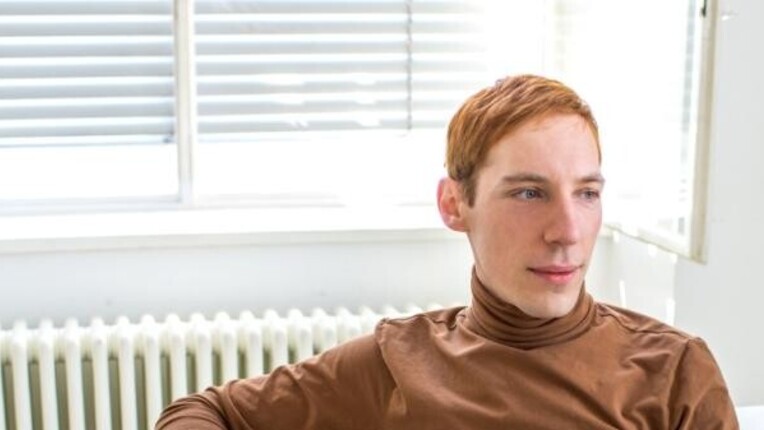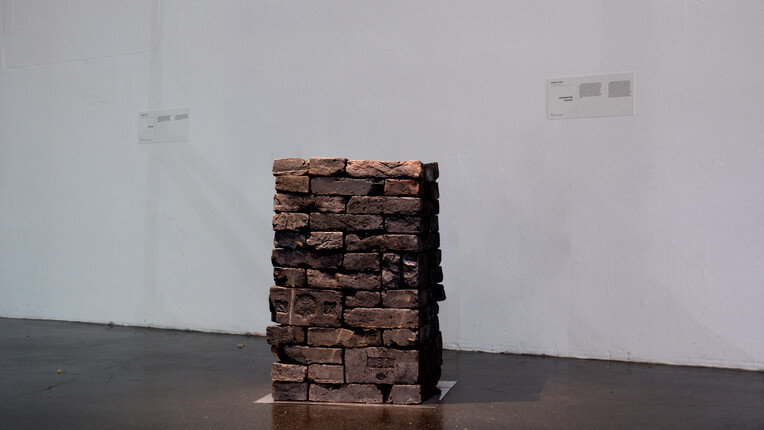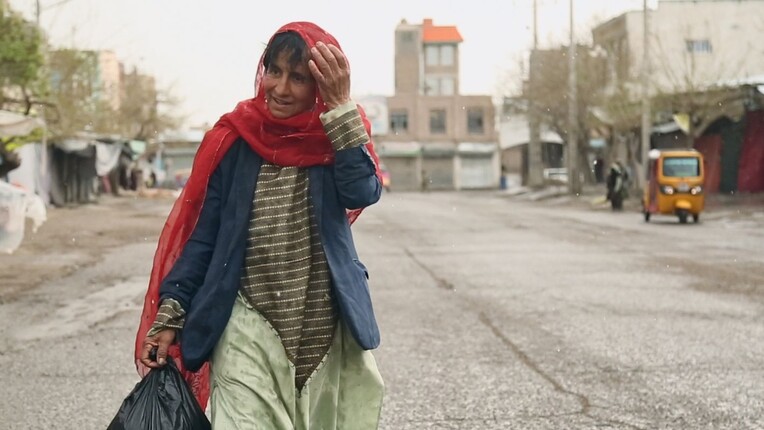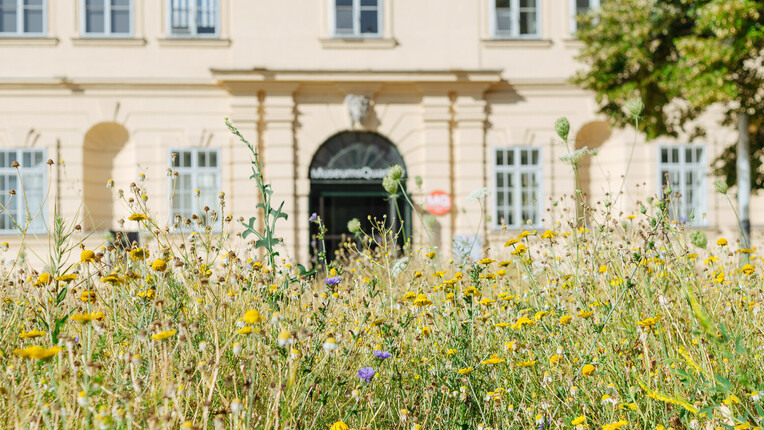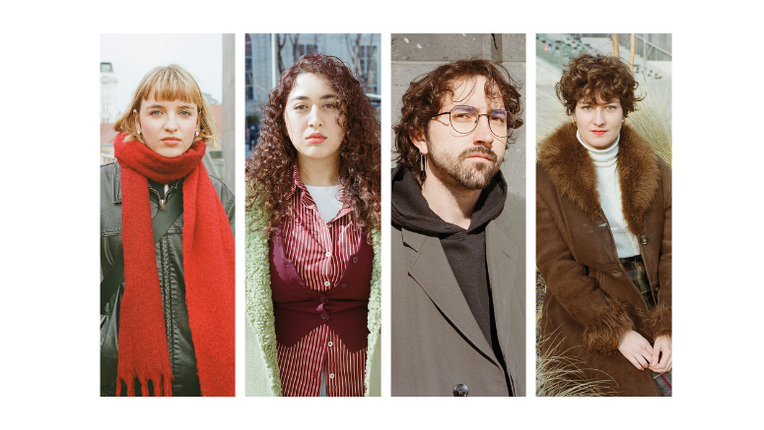
Leyla Cárdenas
Leyla Cárdenas' contribution to the exhibition AJNHAJTCLUB are two huge Atlas statues made of aluminum foil, „carrying the weight“ of a scaffold which dominates the exhibition’s design. Read here about her idea behind it.
Leyla Cárdenas was an Artist-in-Residence at Q21/ MuseumsQuartier Wien in June 2016. Her contribution to the exhibition AJNHAJTCLUB – curated by Bogomir Doringer – was developed during this stay: two huge Atlas statues made of aluminum foil, „carrying the weight“ of a scaffold which dominates the exhibition’s design. Read here about her idea behind it.
„One of my first approaches to a new context or city is always its architecture. I´m always behind those hidden signs, scars and layers of meaning of the urban surfaces we inhabit. Of course, during my residency I became fascinated with Vienna. In a way Vienna is the focal point of European Modernism. A city with many influences, erasements, reconstructions and configurations. Gastarbeiter, or guest workers, were a very important chapter of the shaping of this place. The exhibition AJNHAJTCLUB is trying to acknowledge that. So, coming with this idea in mind, I did a lot of walking and cycling all around the city, learning from its visible and invisible structures, focusing more on the invisible. During the process of developing my work I visited the building hosting the former office and apartment of Sigmund Freud. Inevitably, to think of Vienna is also to think of psychoanalysis and its impact on the world.
On the same block of buildings I noticed the prominent atlantes that seem to be carrying the entire block on their shoulders. Immediately I thought of these atlantes’ symbolic function: to carry the weight of the place where the idea of the subconscious was born. So my first intuition was to do something related to the subconscious of the city in relation with the Gastarbeiter phenomenon. Because of their status as guest workers they were not really allowed to take roots and form a community. This makes it a very difficult subject to track. There are no signs left. Or at least in my research there were not many I could find.
For me, architectural and urban surfaces are both a medium and a ‘skin’. On them, traces of use are recorded, erased and recorded again, like urban palimpsests. As permeable membranes, surfaces mark and regulate their status as borders or ultimate limits and simultaneously transition in physical terms (between the wall and the image, the floor and covering, between architecture and body). During the process of research I always feel like I’m chasing something immaterial. Stubbornly I’ll try to give it some shape…
My other clue was a list of clubs compiled by Ljubomir Bratić, a researcher and expert in this subject (and also a contributing artist). This list with names and addresses of places for meeting and exchange was my starting point for the final proposal. I made a kind of pilgrimage to most of the places on the list and took photos of the addresses and the entrance doors. Again, no signs left of their previous use. Most of these clubs were underground and clandestine. So I wanted to find a trace, some kind of material evidence of these places. That’s how the 3rd embossing with foil started. The foil I used is black and very dark. It looks like carbon paper from a distance. I like to play with the ambiguity of the materials I use.
The casts I used for my work are chasing a story that hasn’t been told – a story I cannot tell either. I’m still left with a list of addresses, some names and data that I attempt to collect as pieces of evidence. I’m looking to grasp something of that fragmented and untold story. Layers of folded aluminum foil speak about this absence but at the same time they are a minimal presence. How to give shape to an invisible story? How to trace this invisibility? Casts of these recollections, names that evoke places, numbers that used to be meeting places, they are placed among the fragments of the shape of the atlantes.
I’m interested in the atemporality of these atlas figures. They are so anachronistic, but in this city they constantly appear all around you. Furthermore, they are not innocent, they aestheticize subjugation. They seem a little out of place but they are part of the “decor”. They also seem to be witnesses, observers from a particular point of view. And depending on the neighbourhood, the sculptures become anatomically less accurate, they adopt strange postures, usually very theatrical. I hope that placing these fragments together makes it possible to create new connections, tie knots with imaginary threads between the signs, or notice presences that are usually not so visible in the fabric of the city.“
Leyla Cárdenas, July 2016
#AJNHAJTCLUB
curated by Bogomir Doringer
Jul 06 thru Sep 04, 2016 Tue to Sun 1 - 4 PM, 4:30 - 8 PM
frei_raum Q21 exhibition space
photos (if not otherwise stated): Eva Ellersdorfer-Meissnerova
